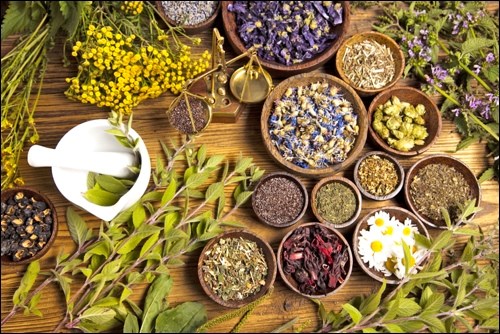The prairies are a unique place. The plants that are indigenous to the prairie region are also unique. They have played a special role in the history of this region. Originally, with the native peoples, the plants were an essential element of everyday life. The use of the plants was much more that just taking a remedy, it was a process that understood the deep interdependence of humans, the Earth and all of Earth’s creatures. The spiritual belief behind the use of herbs was the great Mother Earth provided a remedy for all illness that would affect man. Plants were used carefully and were never exploited.
Nature communicates to us with fragrance, colours and flavours. It is these characteristics that were observed closely by those learned in the art of herbalism. Those harvesting the herbs would also memorize the location where each plant grew and all of this information together would be used to locate a specific plant in the future.
Traditionally, it was the medicine man who possessed the gift to heal and of course gathered the healing plants. The healing gift he possessed would be handed down to him by his forefathers and he in turn would pass his knowledge on to his successors. Those who successfully practice herbalism know that the herbs are to be respected, that you have a belief in spirituality and that with the knowledge and the belief, herbs can be depended on.
Plants would be observed throughout the season, in their natural habitats. They were viewed as an integral part of the whole environment and those traditionally gathering or harvesting the herbs would do so with reverence. Although herbs would be gathered throughout the year, the bulk of the harvesting would occur between June and September. It was believed that in different seasons, the vital energy of the plant would be contained in different parts of the plant itself.
In the spring, while the plants are vigorously growing, the energy would be contained in the newly formed leaves and buds. For example, tree buds and black poplar pods would be picked as soon as they appeared in spring to maximize their healing powers.
During the summer months, the newly formed blossoms and fruit would be the chosen plant parts for harvest.
In fall and winter, the roots would contain that energy. To ensure the least amount of damage to the plant as well as the capturing of maximum energy, any roots of fruit bearing shrubs would only be taken when dormant. Before roots would be harvested, a prayer would be uttered to the Great Spirit to give thanks for the sharing of nature. Tobacco would be left in place of the root and it was believed that tobacco was smoked by the forest spirits.
After they were harvested, they generally would be carefully dried for preservation. Later, when used to heal, those same characteristic colours and fragrances used in the gathering process would again be called upon to aid in the selection of herbs needed. Discoveries of formulas for healing and new techniques would be shared with other healers. During gatherings, healing knowledge and methodology would be pooled and herbs would be exchanged. This ensured the improvement of the healing itself but more importantly allowed for the passage of information on to the next generation.
Over the years, as herbalism has evolved, Mother Earth has been generous with her bounty and has rewarded the people by sharing her secrets and the healing energy of her plants. The path of the herbalists involved throughout the years has been pure. Much time and energy has been devoted to the learning process. It is knowledge that we would not like to lose.
This evolution has also resulted in not only a better understanding of the herbs themselves and their uses but also of the environment as a whole. We give great thanks to Mother Earth for all of the secrets to good health.
If this article has inspired you to seek more knowledge, please let us know as we would love to host an educational opportunity to further enhance our learning. Please get in touch with us at growyourfuture@gmail.com and we hope to plan a day devoted to herbalism and healing.
— Hanbidge is a horticulturist with the Saskatoon School of Horticulture and can be reached at 306-931-GROW(4769); by email at growyourfuture@gmail.com or check out our website at www.saskhort.com.



